Eleanor
1000+ Posts
I love Northumberland and it is several years since I was last there. When an unsolicited email arrived from Cairngorm Travel for five days in Northumberland this March, I didn’t hesitate long.
Cairngorm Travel are a coach company based in Goole and run short holiday breaks with pick up point across the north of England. I rang to place my booking. Dealings with Cairngorm travel by phone were good. Calls were answered promptly and efficiently and all my questions answered. They don’t charge extra for use of a credit card, but do ask that you have insurance for the trip. Paperwork and details were sent out a week before the holiday.
I was the only person travelling from Scunthorpe so was picked up by car from Scunthorpe Bus Station and taken to Doncaster Interchange where I joined the main coach. This worked very well, especially when the driver on the return trip dropped me off at home, rather than the bus station.
The coach had other pick ups at Ferrybridge, Wetherby and Durham Services, where people arrived by mini bus.
We arrived at Alnwick about 4pm and were booked into the White Swan Hotel for four nights.
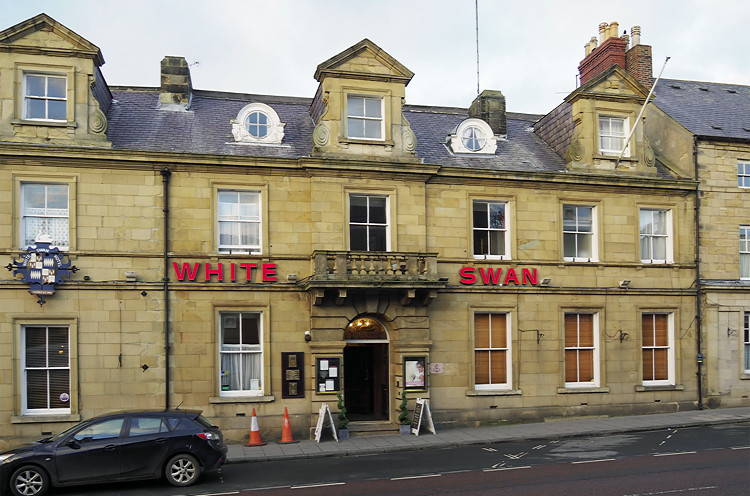
This is an old coaching inn in the centre of Alnwick and is a lovely old fashioned place with a lot of character. The revolving door, main staircase and fitting in the dining room (panelling, windows, mirrors and plasterwork) came from the RMS Olympia which was a sister ship of the Titanic and as opulent. When the Olympic was scrapped in the late 1930s, the then owner of the hotel bought them to install here.
The dining room is stunning and meals more than lived up to the surroundings.
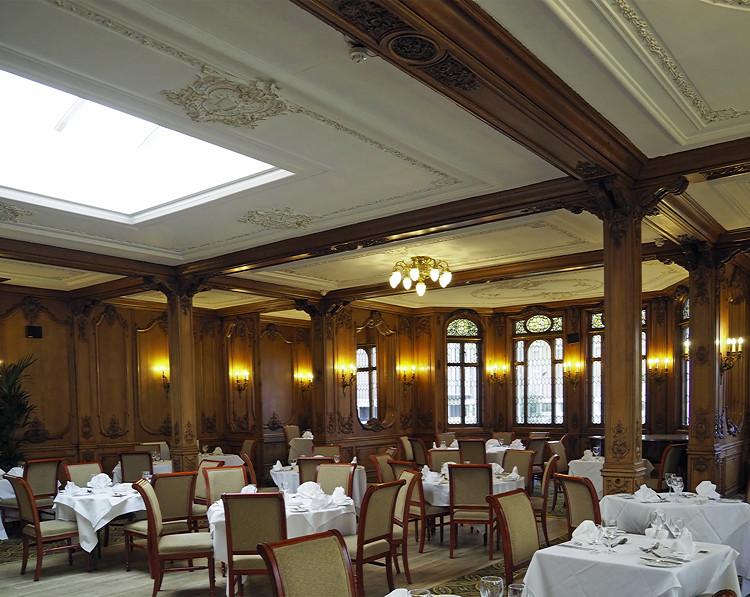
There was plenty of choice on the three course evening menu. Food was properly cooked and attractively presented with good size portions. The cheese plate could have served three. As well as the usual full English breakfast, there were also Craster Kippers on the menu, which were so popular the chef had run out by the second morning.
I had a room at the back of the hotel, so the view wasn’t brilliant.
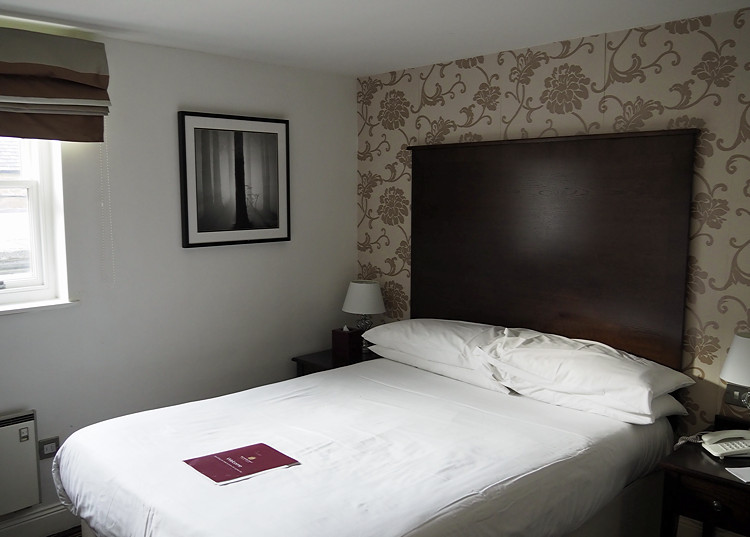
It was a comfortable room with an excellent walk in shower, good towels and plenty of toiletries. The welcome tray also included two packs of Grandma Wild biscuits each day along with two bottles of water (still and sparkling).
There was a big flat screen TV, hair drier, ironing board and iron. There was an open hanging area with plenty of coat hangers. My only criticism would be lack of drawer space for clothes. This was limited to two small drawers beneath the desk and bedside tables.
I had enough time after registering to go for a walk round Alnwick taking photographs and got as far as the Lion Bridge for the classic view of Alnwick Castle seen across the river.
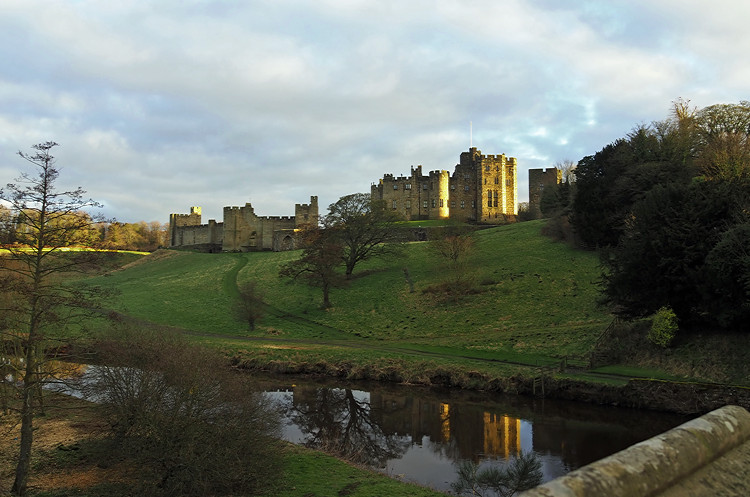
We spent all of the first day on Holy Island, arriving just before the causeway was covered until late afternoon. The advantage of this was there were few visitors. On sunny days in summer when the causeway is open all day, the island does get uncomfortably busy.
I had planned to visit the ruins of the Priory but found it was shut (unexpected closure at short notice) so had to admire from over the wall.
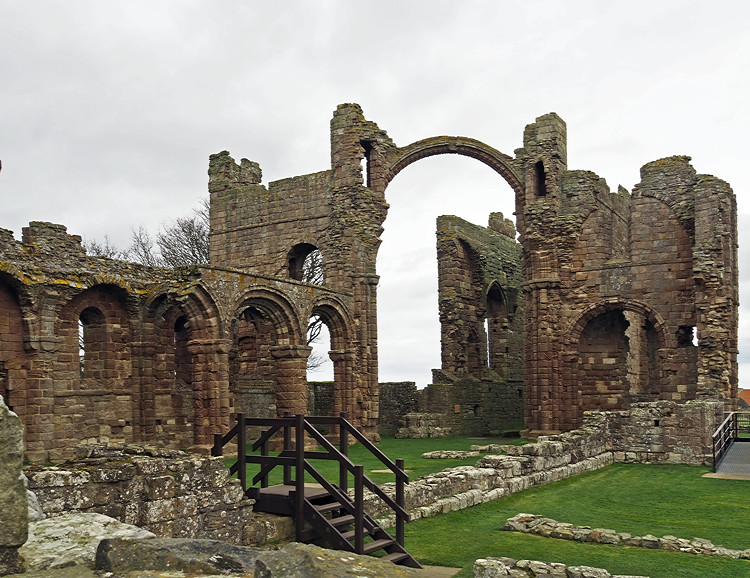
St Mary’s Church next to the Priory and the parish church was open and nearly everyone visits.
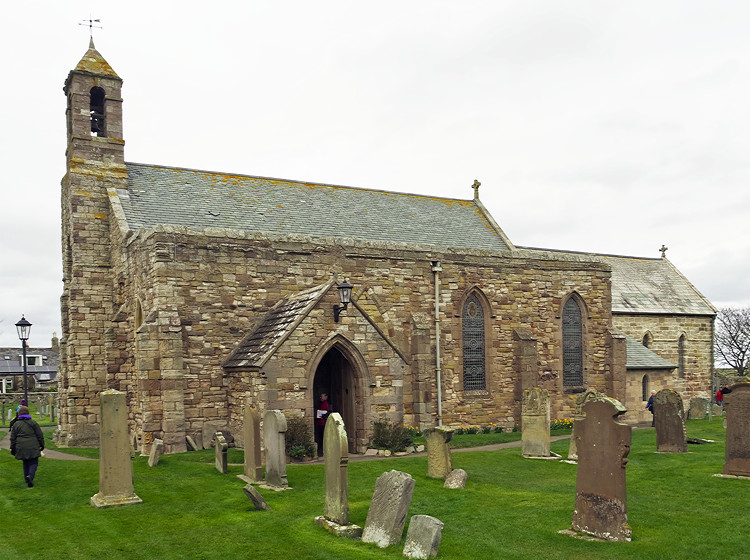
I walked to the castle which has recently reopened after a massive restoration programme to sort out problems with damp from leaking roofs and windows. Many of the rooms are still unfurnished which means you see the architecture and structure of the rooms rather than the furnishings.
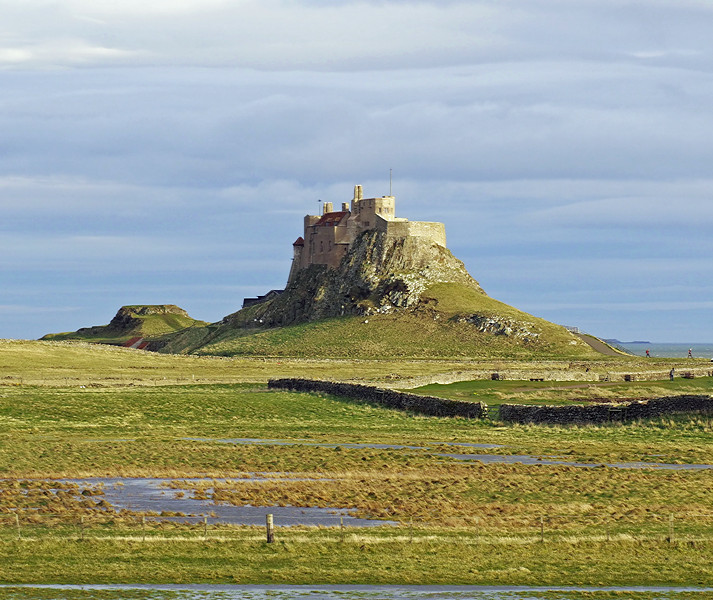
The next day was a free day for us to spend in Alnwick. I began with St Michael’s Church, an impressive C15th building overlooking the river, but the outside is more impressive than the inside.
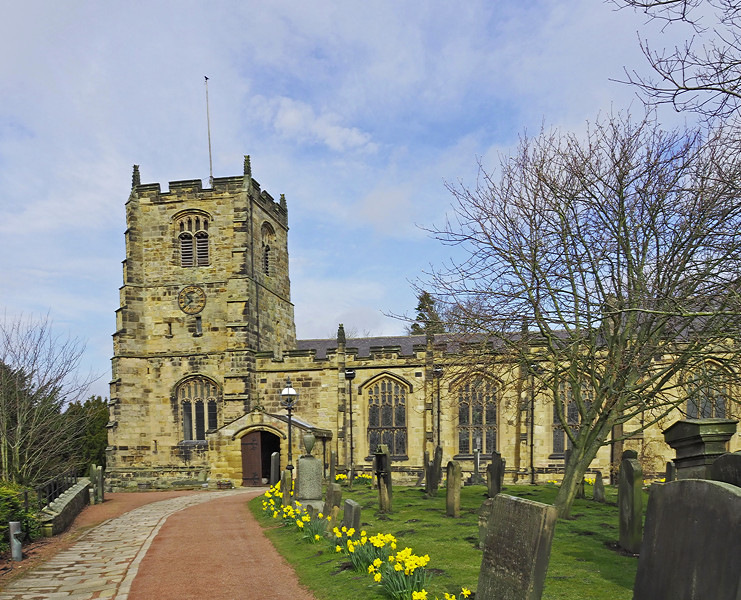
Although Alnwick Castle was shut until the end of the month, the Gardens are open all year. I had read a lot about them before visiting and they more than lived up to all the hype. They were the brian child of the present Duchess who wanted to restore a disused Walled Garden to provide much needed employment and also bring tourists and their money into the area. They have certainly achieved this. Visiting before the leaves come out means you can appreciate the monumental scale of the gardens and the work needed to create them. The cascade is stunning.
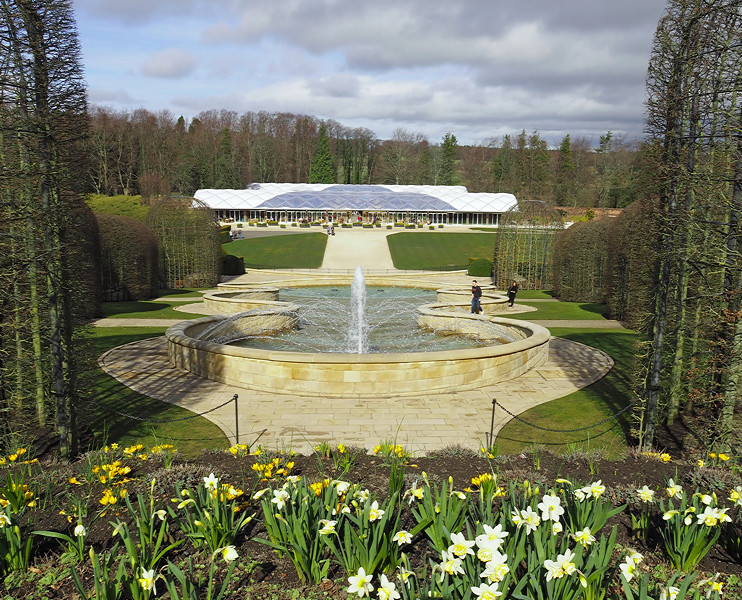
I finished the day by visiting Barter Books in the old railway station. This markets itself as the largest second hand bookshop in the country and it is huge. In fact there were so many books, I went into overload.
Our final day was a trip to Cragside, near Rothbury. This was the home of C19th Tyneside Industrialist Lord Armstrong. It was the first house in the world to be lit by electricity and labour saving devices so essential today. It is said to be the place were modern living began. We had plenty of time to visit the house and explore the gardens.
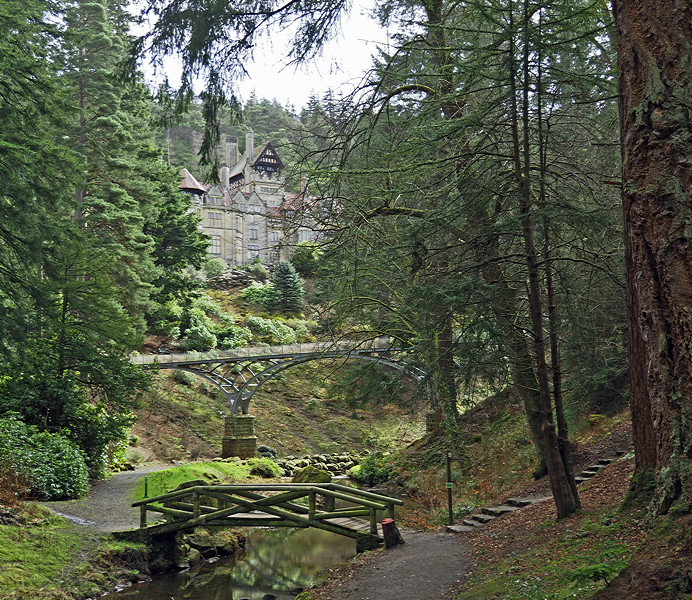
The next day was back to Scunthorpe. This is the first time I have been with Cairngorm Travel and I was impressed. The coach was comfortable. The feeder service worked well, reducing the amount of time spend sitting in the coach travelling around the countryside to pick up passengers. I would definitely use them again.
The following pages contain more detailed descriptions and lots of pictures of the places visited. It is an area ignored by many tourists who rush through heading to Edinburgh and Scotland. They miss a lot.
Cairngorm Travel are a coach company based in Goole and run short holiday breaks with pick up point across the north of England. I rang to place my booking. Dealings with Cairngorm travel by phone were good. Calls were answered promptly and efficiently and all my questions answered. They don’t charge extra for use of a credit card, but do ask that you have insurance for the trip. Paperwork and details were sent out a week before the holiday.
I was the only person travelling from Scunthorpe so was picked up by car from Scunthorpe Bus Station and taken to Doncaster Interchange where I joined the main coach. This worked very well, especially when the driver on the return trip dropped me off at home, rather than the bus station.
The coach had other pick ups at Ferrybridge, Wetherby and Durham Services, where people arrived by mini bus.
We arrived at Alnwick about 4pm and were booked into the White Swan Hotel for four nights.
This is an old coaching inn in the centre of Alnwick and is a lovely old fashioned place with a lot of character. The revolving door, main staircase and fitting in the dining room (panelling, windows, mirrors and plasterwork) came from the RMS Olympia which was a sister ship of the Titanic and as opulent. When the Olympic was scrapped in the late 1930s, the then owner of the hotel bought them to install here.
The dining room is stunning and meals more than lived up to the surroundings.
There was plenty of choice on the three course evening menu. Food was properly cooked and attractively presented with good size portions. The cheese plate could have served three. As well as the usual full English breakfast, there were also Craster Kippers on the menu, which were so popular the chef had run out by the second morning.
I had a room at the back of the hotel, so the view wasn’t brilliant.
It was a comfortable room with an excellent walk in shower, good towels and plenty of toiletries. The welcome tray also included two packs of Grandma Wild biscuits each day along with two bottles of water (still and sparkling).
There was a big flat screen TV, hair drier, ironing board and iron. There was an open hanging area with plenty of coat hangers. My only criticism would be lack of drawer space for clothes. This was limited to two small drawers beneath the desk and bedside tables.
I had enough time after registering to go for a walk round Alnwick taking photographs and got as far as the Lion Bridge for the classic view of Alnwick Castle seen across the river.
We spent all of the first day on Holy Island, arriving just before the causeway was covered until late afternoon. The advantage of this was there were few visitors. On sunny days in summer when the causeway is open all day, the island does get uncomfortably busy.
I had planned to visit the ruins of the Priory but found it was shut (unexpected closure at short notice) so had to admire from over the wall.
St Mary’s Church next to the Priory and the parish church was open and nearly everyone visits.
I walked to the castle which has recently reopened after a massive restoration programme to sort out problems with damp from leaking roofs and windows. Many of the rooms are still unfurnished which means you see the architecture and structure of the rooms rather than the furnishings.
The next day was a free day for us to spend in Alnwick. I began with St Michael’s Church, an impressive C15th building overlooking the river, but the outside is more impressive than the inside.
Although Alnwick Castle was shut until the end of the month, the Gardens are open all year. I had read a lot about them before visiting and they more than lived up to all the hype. They were the brian child of the present Duchess who wanted to restore a disused Walled Garden to provide much needed employment and also bring tourists and their money into the area. They have certainly achieved this. Visiting before the leaves come out means you can appreciate the monumental scale of the gardens and the work needed to create them. The cascade is stunning.
I finished the day by visiting Barter Books in the old railway station. This markets itself as the largest second hand bookshop in the country and it is huge. In fact there were so many books, I went into overload.
Our final day was a trip to Cragside, near Rothbury. This was the home of C19th Tyneside Industrialist Lord Armstrong. It was the first house in the world to be lit by electricity and labour saving devices so essential today. It is said to be the place were modern living began. We had plenty of time to visit the house and explore the gardens.
The next day was back to Scunthorpe. This is the first time I have been with Cairngorm Travel and I was impressed. The coach was comfortable. The feeder service worked well, reducing the amount of time spend sitting in the coach travelling around the countryside to pick up passengers. I would definitely use them again.
The following pages contain more detailed descriptions and lots of pictures of the places visited. It is an area ignored by many tourists who rush through heading to Edinburgh and Scotland. They miss a lot.
Last edited:
